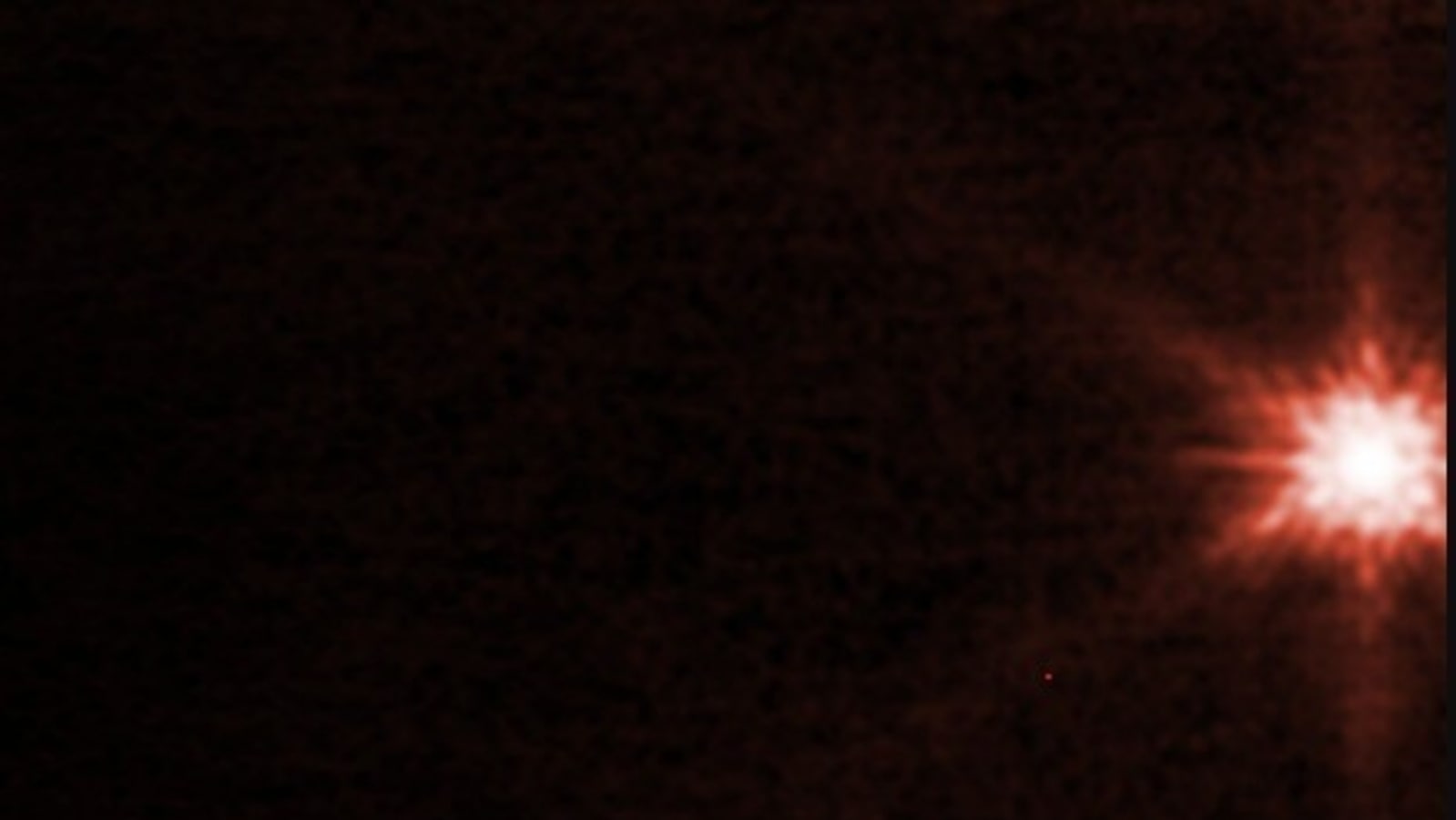Spectacular! James Webb Telescope, Hubble Telescope capture NASA craft's asteroid strike
World's two most powerful telescopes, James Webb Telescope and Hubble Telescope, captured Nasa spacecraft's asteroid impact.

NASA's DART mission success looks to have got everyone on the internet excited. And it should! As one NASA official siad, it has given relief to earthlings from the threat of potentially dangerous asteroids. While the US space agency has already shared the scenes of the historic moment, the world's most powerful telescopes, James Webb Telescope and Hubble Space Telescope have also captured the moment and revealed the first images of the Dart Mission Asteroid strike on Thursday. This is not only a special moment for NASA as it has created history of crashing a craft into an asteroid, but also this is the first time when both these telescopes have observed the same celestial object at the same time.
The DART mission was tested on asteroid Dimorphous. Images captured by the telescopes showed a vast cloud of dust expanding from Dimorphos and Didymos as the spacecraft slammed into it.
James Webb's Near-Infrared Camera (NIRCam) captured the images four hours after the DART spacecraft hit the target asteroid. The image shows "plumes of material appearing as wisps streaming away from the centre of where the impact took place", shared by the European Space Agency, James Webb and Hubble in a joint statement. The images captured by James Webb's images are in red because the telescope operates primarily in the infrared spectrum, that allows it to peer deeper into the universe than ever before.
_1664474838769.jpeg)
_1664474838769.jpeg)
On the other hand, the images from Hubble's Wide Field Camera 3 appeared in blue as it showed the impact in visible light. Hubble captured the moment from 22 minutes, five hours and eight hours after impact. It displayes the expanding spray of matter from where DART hit on the asteroid's left.
Meanwhile, the moments captured by LICIACube - a tiny Italian satellite that flew just behind DART show a large plume of dust coming off the target asteroid after DART had slammed into it while the cloud of rocks and other debris spread quickly upwards. LICIACube captured the impact after 3 minutes of DART hitting the Dimorphous. Its first images, released by the Italian Space Agency on September 27.
Catch all the Latest Tech News, Mobile News, Laptop News, Gaming news, Wearables News , How To News, also keep up with us on Whatsapp channel,Twitter, Facebook, Google News, and Instagram. For our latest videos, subscribe to our YouTube channel.





























